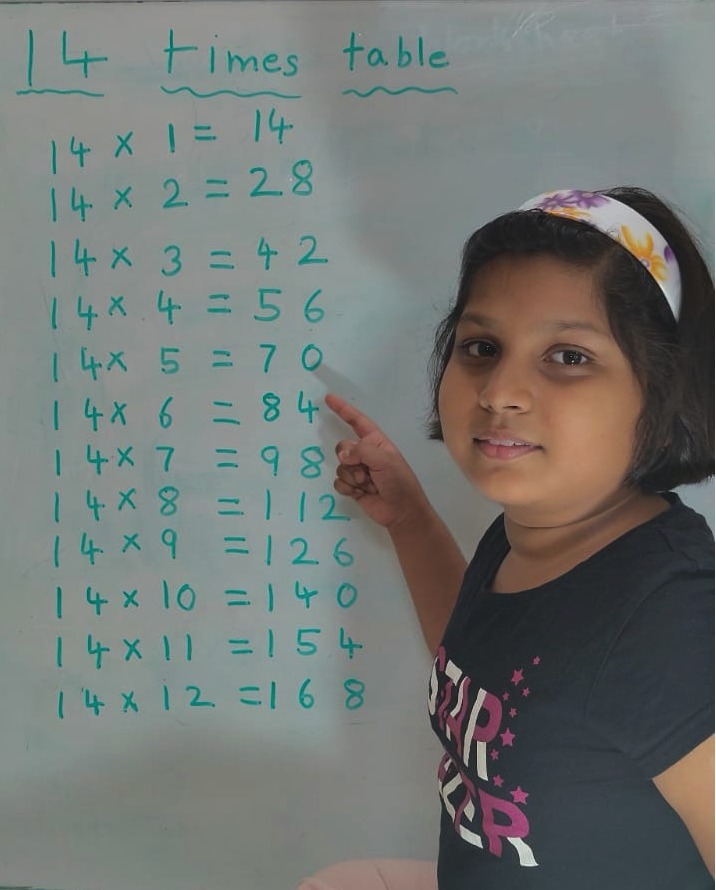Properties of Perfect Squares
The properties of perfect squares are explained here in each property with examples.
Property 1:
Numbers ending in 2, 3, 7 or 8 is never a perfect square but on the other hand, all the numbers ending in 1, 4, 5, 6, 9, 0 are not square numbers.
For example:
The numbers 10, 82, 93, 187, 248 end in 0, 2, 3, 7, 8 respectively.
So, none of them is a perfect square.
Property 2:
A number ending in an odd number of zeros is never a perfect square.
For example:
The numbers 160, 4000, 900000 end in one zero, three zeros and five zeros respectively.
So, none of them is a perfect square.
Property 3:
The square of an even number is always even.
For example:
2² = 4, 4² = 16, 6² = 36, 8² = 64, etc.
Property 4:
The square of an odd number is always odd.
For example:
1² = 1, 3² = 9, 5² = 25, 7² = 49, 9² = 81, etc.
Property 5:
The square of a proper fraction is smaller than the fraction.
For example:
(2/3)² = (2/3 × 2/3) = 4/9 and 4/9 < 2/3, since (4 × 3) < (9 × 2).
Property 6:
For every natural number n, we have
(n + 1)² - n² = (n + 1 + n)(n + 1 - n) = {(n + 1) + n}.
Therefore, {(n + 1)² - n²} = {(n + 1) + n}.
For example:
(i) {1 + 3 + 5 + 7 + 9} = sum of first 5 odd numbers = 5²
(ii) {1 + 3 + 5 + 7 + 9 + 11 + 13 + 15} = sum of first 8 odd numbers = 8²
Property 7:
For every natural number n, we have
sum of the first n odd numbers = n²
For example:
(i) {1 + 3 + 5 + 7 + 9} = sum of first 5 odd numbers = 5²
(ii) {1 + 3 + 5 + 7 + 9 + 11 + 13 + 15} = sum of first 8 odd numbers = 8²
Property 8 (Pythagorean Triplets):
Three natural numbers m, n, p are said to form a Pythagorean triplet (m, n, p) if (m² + n²) = p².
Note:
For every natural number m > 1, we have (2m, m² – 1, m² + 1) as a Pythagorean triplet.
For example:
(i) Putting m = 4 in (2m, m² – 1, m² + 1) we get (8, 15, 17) as a Pythagorean triplet.
(ii) Putting m = 5 in (2m, m² – 1, m² + 1) we get (10, 24, 26) as a Pythagorean triplet.
Solved examples on the properties of perfect squares;
1. Without adding, find the sum (1 + 3 + 5 + 7 + 9 + 11 + 13 + 15 + 17).
Solution:
(1 + 3 + 5 + 7 + 9 + 11 + 13 + 15 + 17) = sum of first 9 odd numbers = 9² = 81
2. Express 49 as the sum of seven odd numbers.
Solution:
49 = 7² = sum of first seven odd numbers
= (1 + 3 + 5 + 7 + 9 + 11 + 13).
3. Find the Pythagorean triplet whose smallest member is 12.
Solution:
For every natural number m > 1. (2m, m² – 1, m² + 1) is a Pythagorean triplet.
Putting 2m = 12, i.e., m = 6, we get the triplet (12, 35, 37).
● Square
Perfect Square or Square Number
● Square - Worksheets
8th Grade Math Practice
From Properties of Perfect Squares to HOME PAGE
Didn't find what you were looking for? Or want to know more information about Math Only Math. Use this Google Search to find what you need.
Recent Articles
-
Vertical Subtraction | Examples | Word Problems| Video |Column Method
Mar 22, 25 05:20 PM
Vertical subtraction of 1-digit number are done by arranging the numbers column wise i.e., one number under the other number. How to subtract 1-digit number vertically? -
Worksheet on 11 Times Table | Printable Multiplication Table | Video
Mar 22, 25 05:08 PM
Worksheet on 11 times table can be printed out. Homeschoolers can also use these multiplication table sheets to practice at home. -
Worksheet on 10 Times Table | Printable Multiplication Table | Video
Mar 21, 25 03:46 PM
Worksheet on 10 times table can be printed out. Homeschoolers can also use these multiplication table sheets to practice at home. -
5th Grade Prime and Composite Numbers | Definitions | Examples | Math
Mar 21, 25 12:18 AM
5th grade prime and composite numbers -
14 Times Table | Read and Write Multiplication Table of 14| Video
Mar 20, 25 04:03 PM
In 14 times table we will learn how to read and write multiplication table of 14. We read fourteen times table as:One time fourteen is 14 Two times fourteen are 28 Three times fourteen are 42





New! Comments
Have your say about what you just read! Leave me a comment in the box below. Ask a Question or Answer a Question.